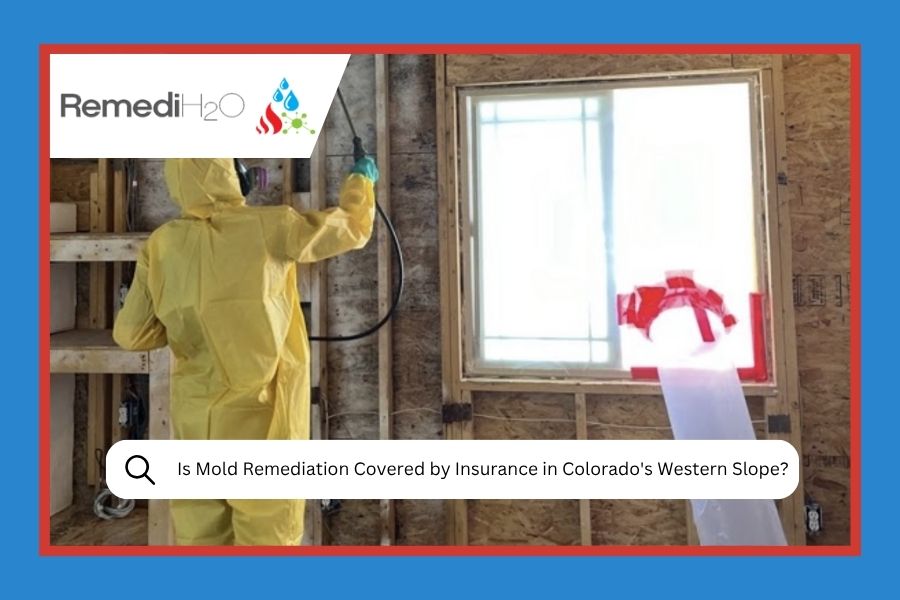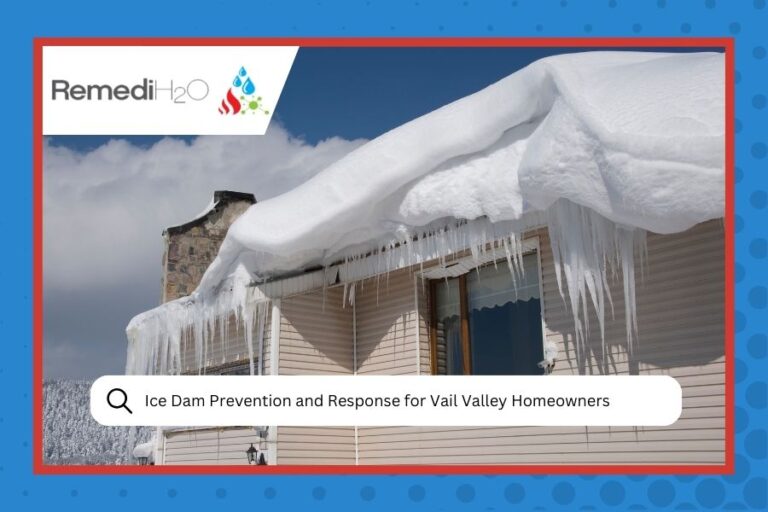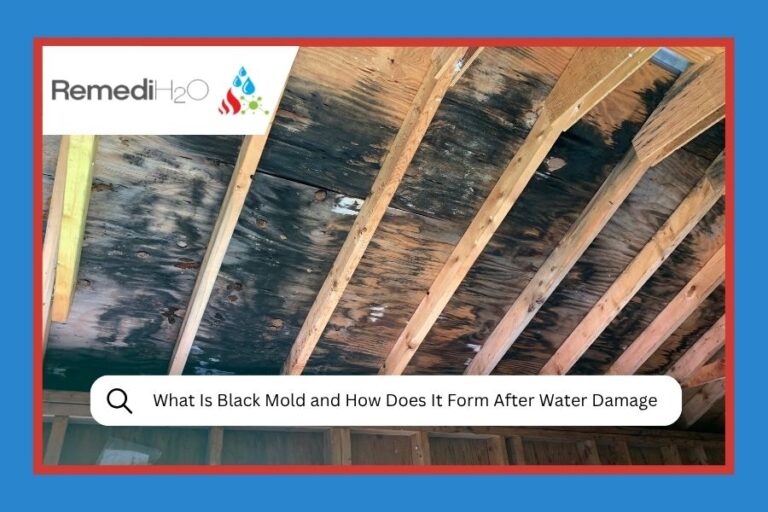Jump to Section:
Let’s be honest – nobody plans to deal with mold. One day you’re living your best life in the Roaring Fork Valley, and the next, you’re staring at a fuzzy patch on your basement wall wondering if your homeowners insurance is about to become your new best friend or your worst enemy.
Here’s the thing: whether your insurance covers mold remediation isn’t a simple yes or no answer. It depends on how the mold got there, when you discovered it, and what your policy actually says in all that fine print you probably skimmed when you signed up.
We’ve worked with countless homeowners across Colorado’s Western Slope dealing with this exact question, so let’s break down what you actually need to know – no insurance-speak, just real talk.
When Insurance Usually Covers Mold Remediation
Good news first: most standard homeowners insurance policies will cover mold remediation if the mold resulted from a “covered peril.” That’s insurance language for “something sudden and accidental that your policy lists as covered.”
Burst or Frozen Pipes: Winter hits hard here in Glenwood Springs and Aspen. If a pipe bursts in your walls or under your foundation, and mold develops as a result, your insurance typically covers both the water damage cleanup and the mold removal.
Sudden Appliance Failures: Your water heater decides to call it quits and floods your basement? Your dishwasher springs a leak while you’re at work? These sudden failures usually qualify for coverage, including any mold that grows from the moisture.
Firefighting Water Damage: If you’ve dealt with a house fire, the water used to put it out can create perfect conditions for mold growth. Fire damage restoration typically includes coverage for resulting mold issues.
Storm-Related Damage: A tree crashes through your roof during a storm, rain pours in, and mold follows. That’s generally covered, as long as the damage was from the storm itself, not from a roof that was already falling apart.
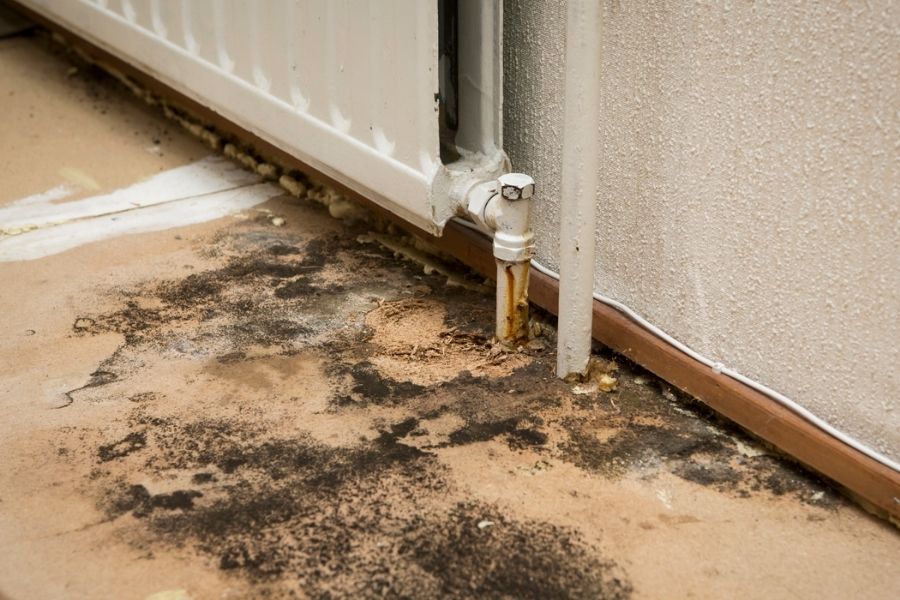
Mold growth on flooring often results from sudden water damage events that are typically covered by insurance.
Dealing with mold from water damage?
Our team at RemediH2O responds 24/7 to help Western Slope homeowners navigate both the cleanup and the insurance claims process.
When Insurance Probably Won’t Cover Mold
Now for the not-so-fun part. Insurance companies aren’t in the business of covering problems that developed slowly or could’ve been prevented with regular maintenance.
Gradual Leaks and Neglect
That slow drip under your sink you’ve been ignoring for six months? The roof leak you kept meaning to fix? Insurance considers these maintenance issues, not sudden accidents. If mold develops from something you should’ve addressed earlier, you’re probably paying out of pocket.
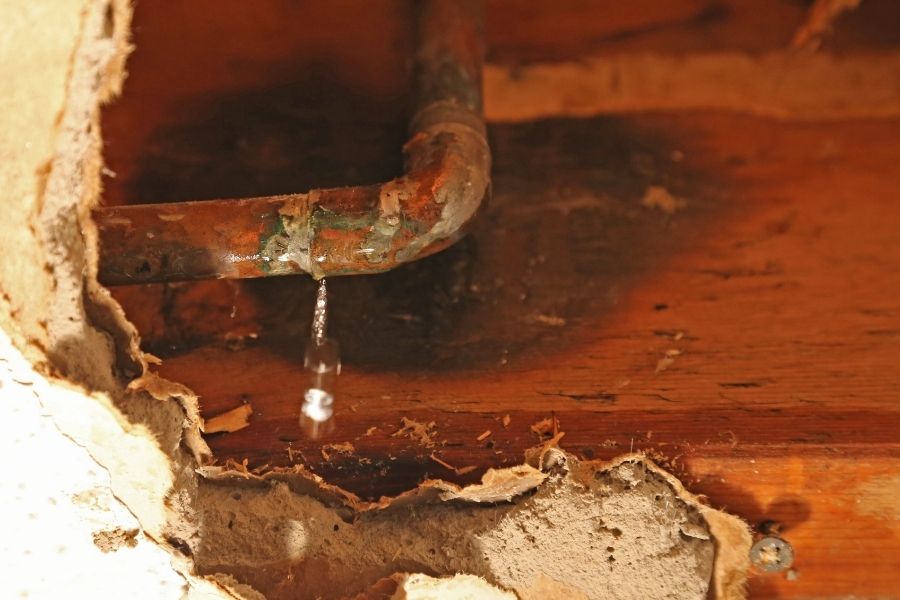
Gradual leaks and maintenance issues that lead to mold growth are typically not covered by standard homeowners insurance.
Long-Term Moisture Problems
Poor ventilation in your bathroom, ongoing condensation issues, or humidity problems that create mold over time typically aren’t covered. Insurance sees these as preventable conditions.
Flooding from External Sources
Here’s a big one that surprises people: if you live near a creek or river and it floods your property, standard homeowners insurance won’t cover it. You’d need separate flood insurance for that. Living in areas like Carbondale or Basalt means being especially aware of this during spring runoff season.
Coverage Quick Guide: What’s Typically Covered vs. Not Covered
✓ Usually Covered
- Burst or frozen pipes
- Sudden appliance failures
- Storm damage
- Firefighting water damage
- Accidental water discharge
✗ Usually Not Covered
- Gradual leaks & neglect
- Poor ventilation issues
- External flooding
- General wear and tear
- Long-term moisture problems
The Fine Print That Actually Matters
Every insurance policy is different, but here are the key details that determine your mold coverage:
Coverage Limits: Many policies cap mold remediation at $5,000 to $10,000. Depending on the severity of your situation, it may not be enough. Check your specific policy limits.
Time Sensitivity: Most policies require you to report damage within a specific timeframe, sometimes as little as 48 to 72 hours. If you discover water damage and wait weeks to report it while mold develops, your insurer might deny the claim.
Primary vs. Secondary Damage: Insurance typically covers mold as “secondary damage” resulting from a covered event. If the original cause isn’t covered, neither is the mold that follows.
How to Maximize Your Insurance Coverage
We’ve helped dozens of homeowners work through insurance claims, and here’s what actually makes a difference:
- Document Everything Immediately: Take photos and videos of all damage before you touch anything
- Report Damage Fast: Call your insurance company as soon as you discover water damage or suspect mold
- Get Professional Assessment: Having a certified restoration company like us document the damage adds credibility to your claim. We’re IICRC-certified and work directly with insurance companies to streamline the process
- Understand Your Deductible: Know what you’ll pay out of pocket before insurance kicks in
- Keep Maintenance Records: Having records showing you’ve properly maintained your home strengthens your position
Your Mold Insurance Claim Action Checklist
| Step | Action | Timing |
|---|---|---|
| 1 | Document all damage with photos/videos | Immediately |
| 2 | Contact your insurance company | Within 24-48 hours |
| 3 | Schedule professional inspection | Within 48-72 hours |
| 4 | Prevent further damage (if safe) | Immediately |
| 5 | Keep all receipts and records | Ongoing |
| 6 | Follow up with adjuster regularly | Weekly |
What to Expect During the Claims Process
Here’s typically how it goes when you file a mold-related claim:
- Report the damage to your insurance company right away
- Your adjuster visits to assess the situation (usually within a few days)
- Professional inspection documents the extent of damage (that’s where we come in)
- Claim approval or denial comes through, hopefully within a week or two
- Remediation begins once you get the green light
- Final inspection ensures the work meets both industry standards and policy requirements
The whole process can take anywhere from two weeks to several months, depending on the complexity of your situation.
Why Working with Local Experts Matters
Here’s something we’ve learned after 25+ years of combined experience in disaster restoration: having a local, family-owned team in your corner makes a huge difference when dealing with insurance companies.
We speak their language. We know what documentation they need. We understand the claims process inside and out. And we’re here in Silt, not some corporate office three states away. When you’re dealing with the stress of property damage, having someone who actually knows Colorado’s Western Slope and cares about getting you back to normal quickly matters.
Whether your situation is covered by insurance or not, we’ll give you honest guidance on your options. Sometimes that means telling you a claim isn’t worth filing. Sometimes it means fighting alongside you to get the coverage you deserve.
Need Help Navigating Your Insurance Claim?
Our IICRC-certified team has helped dozens of Western Slope homeowners successfully work through mold remediation insurance claims. We’ll document everything properly and communicate directly with your insurance company.
Frequently Asked Questions
Does homeowners insurance cover black mold specifically in Colorado?
Colorado insurance policies don’t typically distinguish between types of mold. What matters is the cause of the mold growth. If it resulted from a sudden, covered event like a burst pipe or storm damage, it’s usually covered regardless of whether it’s black mold or any other variety.
How long after water damage do I have to file an insurance claim?
Most policies require notification within 48 to 72 hours of discovering damage, though the exact timeframe varies by insurer. Even if mold hasn’t visibly appeared yet, report water damage immediately. Waiting until mold develops weeks later can jeopardize your claim.
Will filing a mold claim raise my homeowners insurance rates?
Filing any claim can potentially affect your rates, but it depends on your insurance company, your claims history, and the circumstances. Before filing, consider whether the remediation cost significantly exceeds your deductible, sometimes paying out of pocket makes more financial sense long-term.
Can I stay in my home during mold remediation if insurance is paying for it?
This depends on the extent of the contamination and your insurance policy’s coverage for temporary housing. For extensive mold remediation requiring containment and air filtration systems, many insurance policies will cover alternative living arrangements. Small, isolated mold issues usually don’t require relocation.
